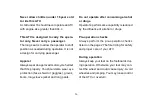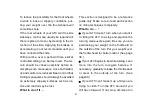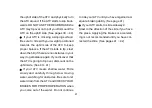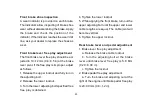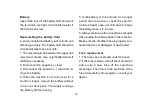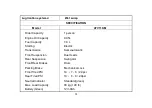
correct the steering when riding on loose sur-
faces by pointing the front wheels slightly
uphill. When riding on slopes be sure not to
make sharp turns either up or down hill.
If your ATV does begin to tip over, gradually
steer in the downhill direction of there are no
obstacles in your path. As you regain proper
balance, gradually steer again in the direc-
tion you wish to travel.
Crossing through shallow water
The ATV can be used to cross slow moving,
shallow water of up to a maximum of 20cm
(7.9 inches) in depth. Before entering the
water, choose your path cautiously. Enter
where there is no sharp drop off, and avoid
rocks or other obstacles which may be slip-
pery or upset the ATV. Ride slow ly and
Carefully.
Test your brakes after leaving the water. Do
not continue to ride your ATV without verify-
ing that you have regained proper braking
ability.
Riding over rough terrain
Riding over rough terrain should be done with
caution. Look out for obstacles which could
cause damage to the ATV or could lead to an
upset or accident. Be sure to keep your feet
firmly fixed on the footboards at all times.
Avoid jumping the ATV as loss of control and
damage to the ATV may result
Sliding and skidding
Care should be used when riding on loose or
slippery surfaces since the ATV may slide. If
unexpected and uncorrected, sliding could
cause an accident.
40











